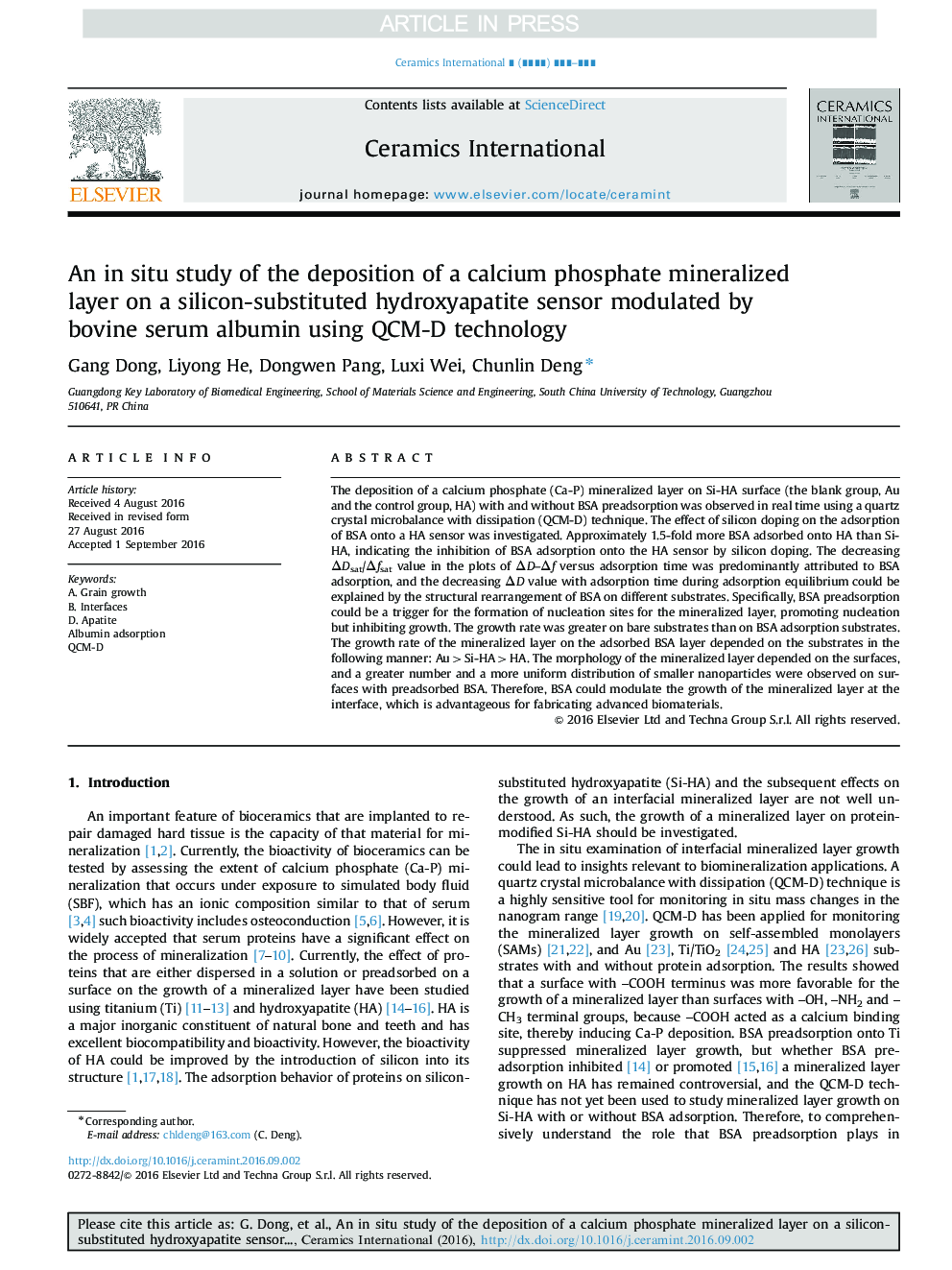| Article ID | Journal | Published Year | Pages | File Type |
|---|---|---|---|---|
| 5439345 | Ceramics International | 2016 | 9 Pages |
Abstract
The deposition of a calcium phosphate (Ca-P) mineralized layer on Si-HA surface (the blank group, Au and the control group, HA) with and without BSA preadsorption was observed in real time using a quartz crystal microbalance with dissipation (QCM-D) technique. The effect of silicon doping on the adsorption of BSA onto a HA sensor was investigated. Approximately 1.5-fold more BSA adsorbed onto HA than Si-HA, indicating the inhibition of BSA adsorption onto the HA sensor by silicon doping. The decreasing ÎDsat/Îfsat value in the plots of ÎD-Îf versus adsorption time was predominantly attributed to BSA adsorption, and the decreasing ÎD value with adsorption time during adsorption equilibrium could be explained by the structural rearrangement of BSA on different substrates. Specifically, BSA preadsorption could be a trigger for the formation of nucleation sites for the mineralized layer, promoting nucleation but inhibiting growth. The growth rate was greater on bare substrates than on BSA adsorption substrates. The growth rate of the mineralized layer on the adsorbed BSA layer depended on the substrates in the following manner: Au>Si-HA>HA. The morphology of the mineralized layer depended on the surfaces, and a greater number and a more uniform distribution of smaller nanoparticles were observed on surfaces with preadsorbed BSA. Therefore, BSA could modulate the growth of the mineralized layer at the interface, which is advantageous for fabricating advanced biomaterials.
Related Topics
Physical Sciences and Engineering
Materials Science
Ceramics and Composites
Authors
Gang Dong, Liyong He, Dongwen Pang, Luxi Wei, Chunlin Deng,
